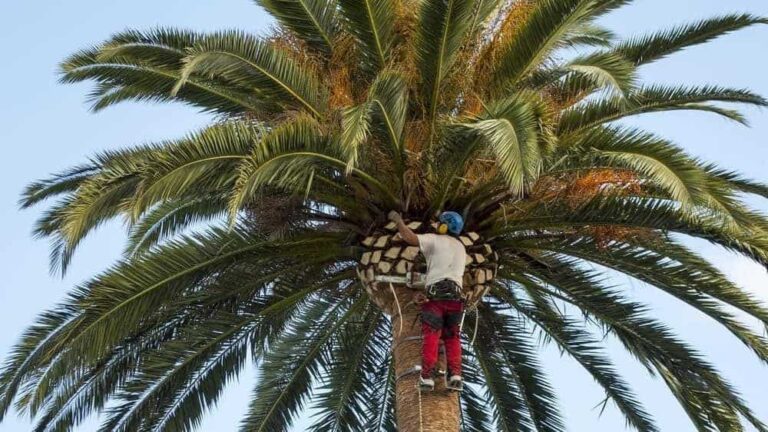Pruning palm trees is an important part of maintaining a healthy and beautiful landscape. Palm tree pruning can help keep a yard looking well-groomed, ensure that plants receive adequate sunlight, and prevent the spread of disease.
This guide will provide readers with tips on proper techniques as well as best practices for the successful pruning of their palm trees. In addition to helping readers learn how to properly prune palms, this article will also describe the various tools available for different types of palm trimming jobs.
With these helpful steps and information, anyone can become an expert in proper palm tree maintenance!
Understanding the Basics of Pruning Palm Trees
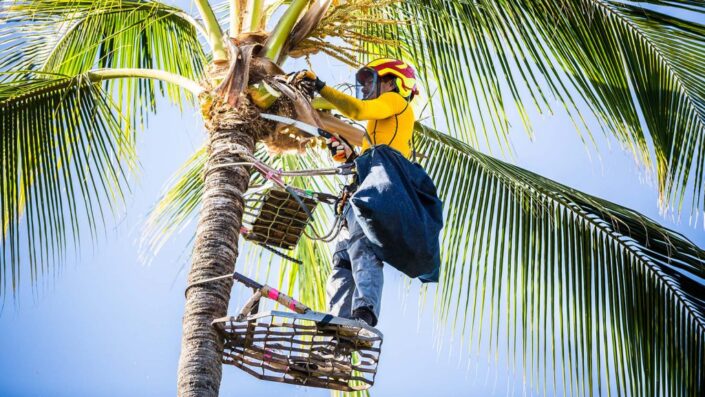
Pruning palm trees is an important part of keeping them healthy and attractive. It’s not as simple as just trimming off branches, though – for best results, there are techniques to follow and knowledge to have. This article will go over the basics of proper pruning so you can keep your palms looking their best.
First, it’s essential to understand why pruning should be done in the first place. Pruning encourages growth by removing any dead or diseased fronds that could be impacting other parts of the tree.
It also helps maintain a neat shape and prevents overcrowding so all new fronds can get plenty of sunlight and the nutrition they need for good health. Next comes knowing what time of year is most beneficial to do your pruning work – different species may have specific requirements but generally speaking springtime (April-May) or early summer (June-July) are ideal times when temperatures are milder and new growth should begin soon after cutting back old fronds.
Make sure you check with your local garden center or nursery on exactly when will be best for each particular variety you’re working with! When it comes time to cut away some old fronds from a palm tree, use sharp gardening shears or specialized tools specifically made for trimming palms like bypass loppers; these will help make clean cuts instead of jagged ones that can damage bark which could lead to disease or insect infestations down the line.
Additionally, look closely at where the trunk splits into multiple stems; if several trunks grow out together then aim snips slightly above where those join up rather than below to avoid injuring young buds that will become next season’s foliage! And finally remember: always leave enough green foliage remaining so light can still reach inside areas closer to base level – otherwise those spots might never regenerate again properly due to partially shaded conditions created by too much removal from the top layer alone!
Identifying When to Prune Your Palm Tree
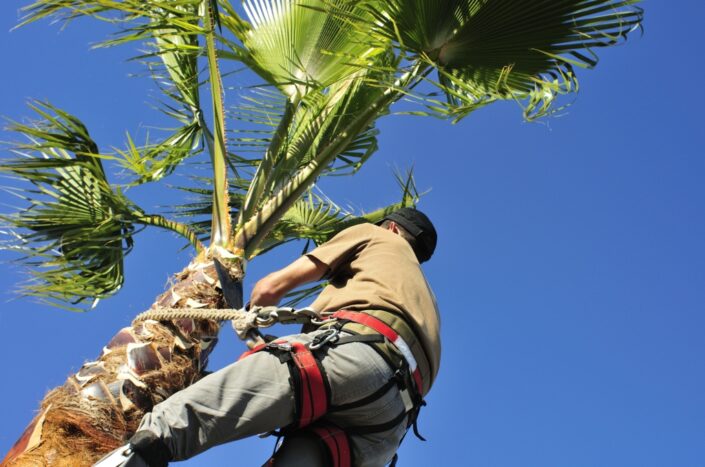
Identifying when to prune your palm tree can be a difficult task. It is important to consider the growth rate and size of the palm tree to determine how often it should be pruned.
If you fail to take into account these factors, then you risk damaging or even killing your beloved plant! In addition to regular maintenance, palm trees may need occasional heavy pruning for various reasons such as restoring health, removing dead fronds, or maintaining an attractive shape. As with any type of gardening work, proper timing plays a major role in successful results.
Pruning at the wrong time of year can damage new buds and stunt growth. Before cutting away branches or leaves from your palms make sure that they are healthy enough for a trimming session – if not wait until they have recovered fully before attempting any sort of pruning activity.
Additionally, different species may require special attention; research what kind of care is best suited for each type before making any drastic decisions regarding its upkeep!
Preparing for and Executing a Pruning Session
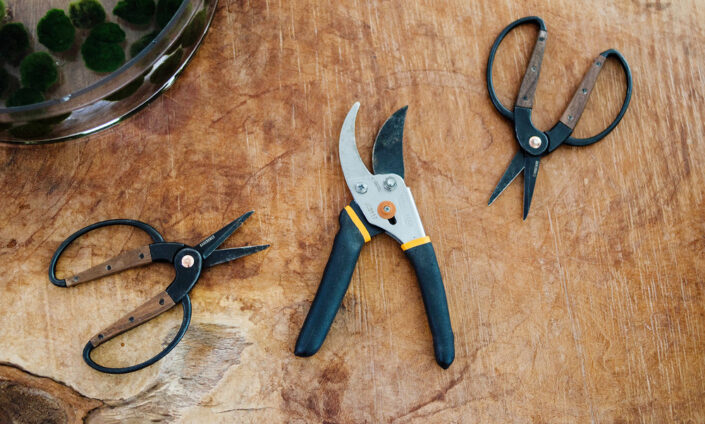
Before beginning a pruning session, it is important to properly prepare. Preparation begins with obtaining the correct tools and safety equipment for the job.
Pruning saws come in different sizes and shapes; make sure you have chosen one that best fits the needs of your palm tree. Goggles should be worn at all times during a pruning session to protect eyes from debris or falling branches.
Gloves are also recommended as they will protect against cuts and scrapes while handling sharp blades or prickly fronds. Once prepared, familiarize yourself with your palm tree’s shape so you can identify any dead or damaged fronds that may require removal first before making any further adjustments to its canopy structure.
It is important not to abruptly remove too many leaves at once, as this could cause stress or even death for your palm tree due to shock loss of photosynthesis material needed for energy production. When executing a pruning session, always use caution when cutting away branches from trees; never cut off more than 25% of its total leaf mass to maintain an aesthetically pleasing shape while still providing enough photosynthesis-producing material for proper health and growth of the plant over time.
Start by removing broken stems near its base then move up towards the top section where large clusters of leaves meet together—this is considered ideal since it maintains balance in terms of weight distribution across both sides without creating an excess on one side versus another which could lead to structural weakness down the line if left unattended. Lastly, take care when disposing of leftover pieces after trimming–dispose of them carefully away from other plants as some parts may contain a disease that could spread through contact with other vegetation nearby!
Tips for Safe and Effective Pruning Practices
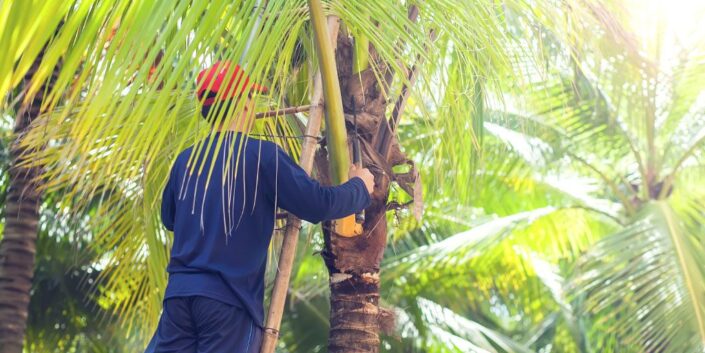
Pruning palm trees is an important part of ensuring their health and beauty. To do it right, there are various techniques that you need to be aware of.
Here are some tips for safe and effective pruning practices: 1. Always use clean, sharp tools when pruning your palm tree – dull or rusty blades can cause more harm than good by tearing the tissue instead of cutting it neatly; this can lead to infections setting in later on.
2. It’s best to leave the removal of dead fronds and fruit stalks to professional arborists who have the experience necessary for such a task – this will help prevent any injury to yourself as well as unnecessary damage to the tree itself.
3. When cutting off large branches, start from the bottom up so that you don’t take out too much at once – this way, you won’t upset the natural shape and balance of your palm tree too drastically all at once; gradual pruning will give you better results over time.
4. Make sure not to remove too many leaves at once either – if no new shoots are growing after several weeks following pruning, then it means that there may have been an excessive amount removed which could affect its overall growth rate in future months or years ahead if left unchecked! 5.
Lastly, always keep an eye on how deep into the trunk or stem any cuts go – going too far could create lasting wounds that won’t heal easily; shallow cuts should only ever be made with care for maximum safety!
Conclusion

Pruning palm trees is a necessary and important part of maintaining the health of these tropical plants. With proper technique and best practices, you can ensure that your palms remain strong and healthy for years to come.
Pruning palm trees can be intimidating for those who are new to this process, but with patience and research, it can become an enjoyable activity that yields great results in the long run.

